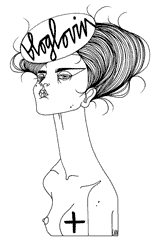"Craft is hands-on, resource-based and practical. It has a visceral connection with materials and the way they are shaped into forms for display or use. It involves the actual doing of something rather than merely the experience of resources, for its active, hands-on quality, for the value it places on lived, grounded experience and emotional satisfaction - craft supports many sustainability values. (...)
Highly developed craft skills can be seen to support democratic ideals, for their potential is distributed widely among us all rather than attributed only to those with wealth or privilege. Crafting garments employs hands in combination with materials and machines. Here it is what you do - that is, technique, honed by years of experience - not who you are or how much technology you can access, that plays a defining role. Further, craft production can be seen to convey a sense of restraint in consumption, a speed limit and volume cap, for after all, you can only consume as much, and as fast, as the craftsperson can produce. Craft can, perhaps covertly, even imply further restrictions. It can suggest that we produce just enough for our own personal consumption (and in so doing opt out of the corporate, industrial model); or produce as a protest against, say, poor treatment of garment workers and degrading environmental quality, because it allows us to control more closely production conditions and material provenance.
In all of these contexts, craft is clearly political. It is an expression of production values, power relations, decision-making and pragmatism. Its sharp political edge is felt perhaps most distinctly in needlecraft's changed role in women's lives over the past 50 years. As recently as two generations ago, knitting, embroidery and dressmaking were part of women's domestic duties and household obligations, keeping females' "idle hands busy". By contrast, in the past decade, vastly different socio-cultural, labour and material conditions have seen needlecraft reclaimed by women as liberating feminist action rather than as subjugating work. It has been recovered as a practical, satisfying, expressive and creative act in and of itself. It is now sometimes referred to as part of the "new domesticity", where meaning is brought to a society dominated by mass-production and ready-made products and with decreasing space and time for hobbies." (Fletcher, Kate & Grose, Lynda. Fashion and Sustainability: Design for Change. Laurence King. London. 2012. pp. 146, 149.)











Aucun commentaire:
Enregistrer un commentaire